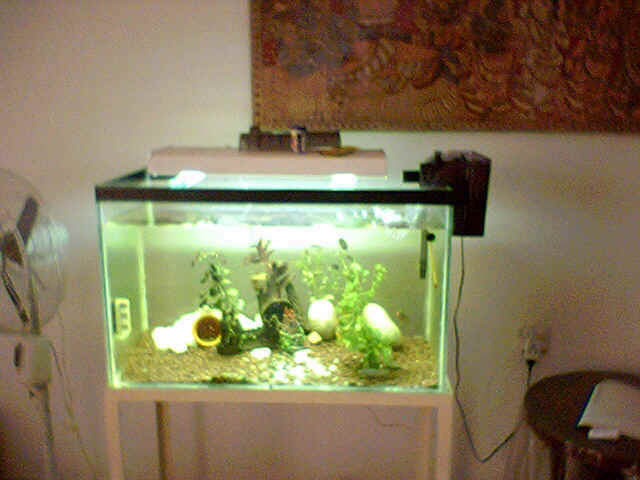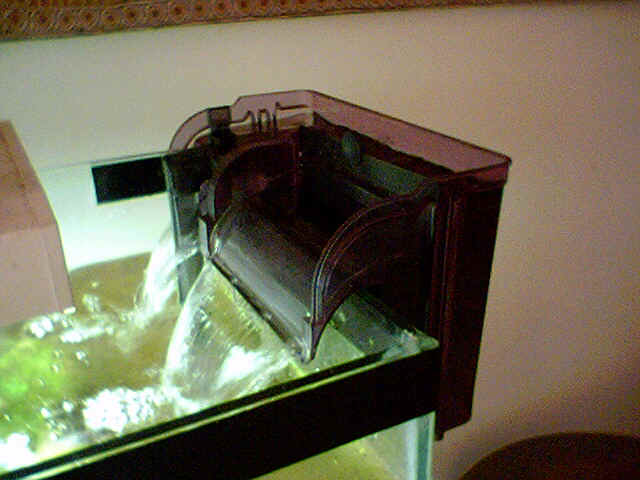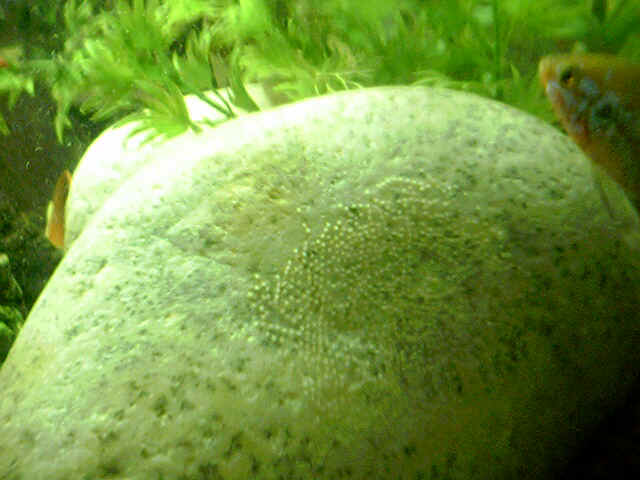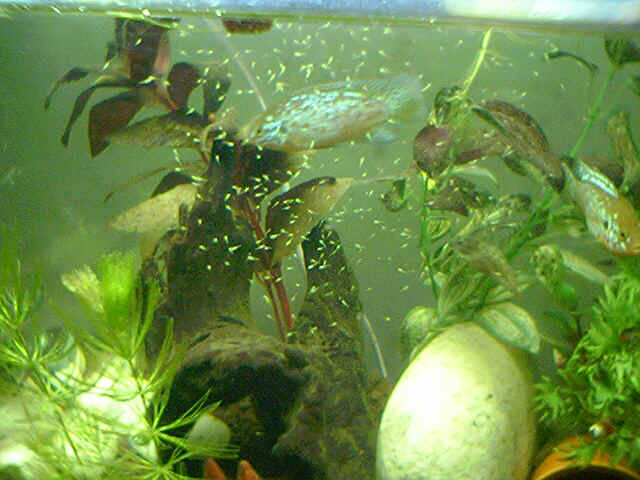Well, at the outset, it is worth reminding ourselves that saying a thing such as “I bred my jewel fish” (which you would be able to after you read this article) could earn raised eyebrows from people who are unfamiliar with aquarium lingo.
I happened to be bitten by the cichlid bug after around four years of fish keeping. I picked up four jewel cichlids around ž inch each on one of my routine sojourns to the LFS.

At home, after quarantine, they shared a tank with a few convicts in a rocky setup. After a week, much to my disappointment, one of the jewel cichlids died. I just allowed the others’ emotional wounds to heal (I’m sure I will get a lot of hate mail saying fish don’t have feelings).
I think it would be worthwhile to say at this stage that all my fish are fed with pellet food. The jewels adjusted remarkably well to the conditions. The tank was 3ft long, 1˝ ft deep and 1ž ft tall with an internal powerhead of 1100 gal/hr filtration capacity which was run for roughly 2 hours a day.
After two months of growing, two of them started to exhibit signs of pairing up. Around this time, I removed the other fish in the tank and gave the three of them the whole tank.
The third fish (which was a female) played an important role in the whole thing. It provided the pair a single object for aggression. Thus, while the pair was busy fighting off the third fish, they involuntarily started to become a team. The internal powerhead was removed and a waterfall filter was affixed. A 30% water change seemed to help speed things up.

The “waterfall” filter which I feel had a large part to play in tricking the fish into believing it had rained (this was coupled with a 20% water change). Note that the filter wasn’t used for filtration – just for the overflow. For this, the filter was packed with extra plastic wool to cause the overflow.
Round about the same time, the female could be seen cleaning a large sloping stone at the corner of the tank. The third fish was removed at this stage. The next morning, a hundred or so eggs were found, with the male and the female taking turns to fan the water around the eggs. A few (1%) of the eggs turned white by the next morning (unfertilised). The pair ate the eggs on the first two occasions. On the third egg batch, the eggs were fanned for two whole days. On the third morning, a few hundred “wrigglers” were found near the stone with the male and the female taking turns to guard them. It is important that the pair be fed well during this time to prevent them from eating the fry.

Thanks to much advice I received from my friends at www.indianaquariumhobbyist.com the fry did well, their yolk sacs were seen to be shrinking and they started getting adventurous. The keen parents made sure that the fry were together. Watching the parents pick each little one that had wandered off and spitting them back into the “home” area was indeed a sight to watch.
Two days later, the fry were free-swimming and were seen swimming in a school, of course carefully overlooked by either of the parents.

It is best that the parents are removed after a week, before they get into another spawning cycle. The fry can be fed baby brine shrimp for three weeks, and later with daphnia until they are ready for pellet food.
Leave a Reply